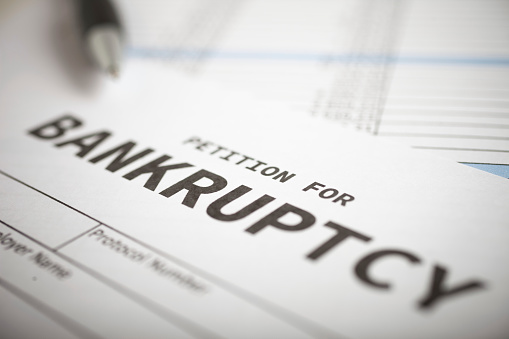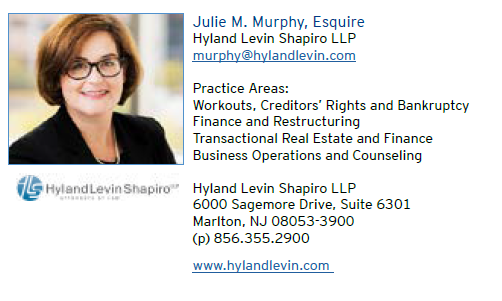 Let’s examine what you need to know about bankruptcy provisions in commercial leases. Each property is unique and every relationship has its own contours that will drive the path of commercial lease negotiations. While a lease cannot account for or predict every potential scenario in the course of a commercial landlord-tenant relationship, landlords can put themselves in a better position to weather a tenant bankruptcy by understanding the bankruptcy landscape, including which provisions will be enforced and which provisions will be ignored by bankruptcy courts.
Let’s examine what you need to know about bankruptcy provisions in commercial leases. Each property is unique and every relationship has its own contours that will drive the path of commercial lease negotiations. While a lease cannot account for or predict every potential scenario in the course of a commercial landlord-tenant relationship, landlords can put themselves in a better position to weather a tenant bankruptcy by understanding the bankruptcy landscape, including which provisions will be enforced and which provisions will be ignored by bankruptcy courts.
Download Printable Article (PDF) >>>
Most landlords know that commercial bankruptcy cases generally take one of two forms: chapter 7 or chapter 11. In both types of cases, the automatic stay applies. In both types of cases, the commercial lease can be assumed, assigned or rejected within a finite period of time. A chapter 7 case is a liquidating case, while chapter 11 cases are typically reorganizations.
A tenant filing bankruptcy under chapter 7 will cease doing business. There, the court appoints a chapter 7 trustee to gather and liquidate assets and to distribute the proceeds to creditors. While the debtor tenant in a chapter 7 case is unlikely to continue the lease, the trustee may sell/assign a valuable lease to a third party. Negotiations in a chapter 7 case take place with the chapter 7 trustee, rather than with the debtor tenant.
On the other hand, a tenant filing a chapter 11 bankruptcy generally continues operations as a “debtor-in-possession.” The chapter 11 case typically culminates in a plan of reorganization, through which the debtor will outline its plans to fund payments to creditors, restructure debt and continue operations as the entity emerges from bankruptcy. Often, chapter 11 debtors seek to shed debt by rejecting above-market leases or leveraging the right to assume and reject leases by extracting rent concessions from landlords as a condition to lease assumption. Absent unusual circumstances, the court will not appoint a trustee, thus negotiations take place with the debtor tenant.
While a tenant bankruptcy filing shifts the balance of power to the tenant, defensively drafted leases may allow the landlord to retain some control and negotiating advantage after the filing of a bankruptcy.
7 Bankruptcy Provisions in Commercial Leases
(1) Tenant bankruptcy triggering lease termination
Bankruptcy provisions in commercial leases that would terminate a lease or modify other rights of a bankrupt party upon the filing of a bankruptcy petition are known as ipso facto clauses and are unenforceable under the Bankruptcy Code. Bottom line: Don’t waste your leverage trying to incorporate or keep an ipso facto provision in the lease.
(2) Waiver of the automatic stay.
The filing of a bankruptcy petition automatically triggers a stay of all activities to collect a debt, including efforts to obtain possession of property. To avoid the delay associated with the imposition of the stay, consider including a provision requiring the tenant to waive the protection of the automatic stay or a waiver of the right to contest a motion by the landlord for relief from the stay. The remedy, if enforced by a court, allows a landlord to obtain relief much sooner than it would otherwise be entitled, particularly because courts are reluctant to grant stay relief in the early days of a bankruptcy case. Bottom line: Whether this provision is worth fighting for depends on your jurisdiction. Not all courts will enforce a pre-petition waiver of the stay, and even if they will, the waiver will generally not be “self-executing”. The blessing of the court is needed. Therefore, to avoid the imposition of sanctions that accompany a violation of the stay (or the voiding of stay-violating activities), landlords with waivers in a lease should consult with counsel on filing the appropriate motion with the bankruptcy court before pursuing eviction or collection activities.
(3) Adequate Assurance Definition.
Under the Bankruptcy Code, in order for a bankrupt tenant to assume a lease, it must provide the landlord adequate assurance that it will meet its future lease obligations. The Bankruptcy Code does not define “adequate assurance”, but the parties can define the concept in the lease to narrow the issues in bankruptcy court litigation. Adequate assurance provisions often require the tenant provide assurances as to (i) the source of future rent, including that any assignee is similarly situated, financially, to the tenant at the time the lease was signed, (ii) the stability of the percentage rent, if applicable; and (iii) non-disruption to the tenant mix in the center or complex. Bottom line: A lease containing specific understandings of ambiguous bankruptcy concepts will carry greater weight with a court interpreting a tenant’s post-petition obligations to its landlord.
(4) Shopping Center Provisions.
While bankruptcy courts do not favor limitations or conditions on the assignability of a lease, shopping center leases receive special treatment and, as a result, shopping center landlords have greater leverage in post-petition assignment negotiations. Therefore, if a property can reasonably be considered a shopping center, including a provision indicating that the property is a shopping center may afford a landlord with additional leverage and protections. Any shopping center lease should require that any assignee of the lease in a bankruptcy adhere to exclusive use (or other use restrictions), co-tenancy and tenant mix requirements. Bottom line: Ensure that any
shopping center lease contains provisions that protect the future viability and maintain the integrity of the shopping center if a tenant lease is assumed and assigned in bankruptcy.
(5) Security.
Cash may be king, but, generally, security deposits become property of the debtor’s estate once a bankruptcy petition is filed, limiting the setoff rights of a landlord and requiring motion practice in the bankruptcy court. A letter of credit, coupled with a lease provision allowing the landlord to draw upon it after default and without notice to the tenant, generally falls outside of “property of the estate” and therefore provides more ready access to cash to a landlord whose tenant has filed for bankruptcy. Bottom line: Securing the tenant’s obligations under the lease by collateral that falls outside the umbrella of “property of the estate” puts the landlord in a better position to recover costs when dealing with a tenant in bankruptcy.
(6) Guarantors.
A corporate parent or affiliate guaranty provides additional security for the tenant’s lease. Frequently, however, that guarantor often files bankruptcy at the same time as the tenant, and the landlord’s claim against the guarantor becomes one of many unsecured claims that will receive cents-on-the-dollar recovery. Personal guaranties from tenant equity holders may provide more protection because of the “skin in the game” and a reluctance of many individuals to file personal bankruptcy. Bottom line: The newer the business or the more limited financial history of your tenant, the more compelling a case for obtaining personal guaranties.
(7) Forecasting Trouble.
Bankruptcy provisions in commercial leases that require the submission periodic financial statements, balance sheets and cash flow statements from a tenant and any guarantors will allow a landlord to monitor the performance of its tenant. Leases containing financial covenants provide a mechanism for a landlord to call a default if financial performance declines. Having a heads-up to financial distress can allow the landlord to exercise remedies quickly and potentially in advance of any bankruptcy filing. The automatic stay does not apply to leases terminated pre-petition, so moving quickly to terminate in a distressed situation may give the landlord a valuable edge in regaining possession of the property outside of the bankruptcy court. Bottom line: The more you know about your tenant’s finances, the better you can react to a deteriorating situation, whether by exercising remedies or bolstering the security for the tenant’s obligations under the lease.
The contents of this article are for informational purposes only and none of these materials is offered, nor should be construed, as legal advice or a legal opinion based on any specific facts or circumstances.
Have questions about about bankruptcy provisions in commercial leases?



